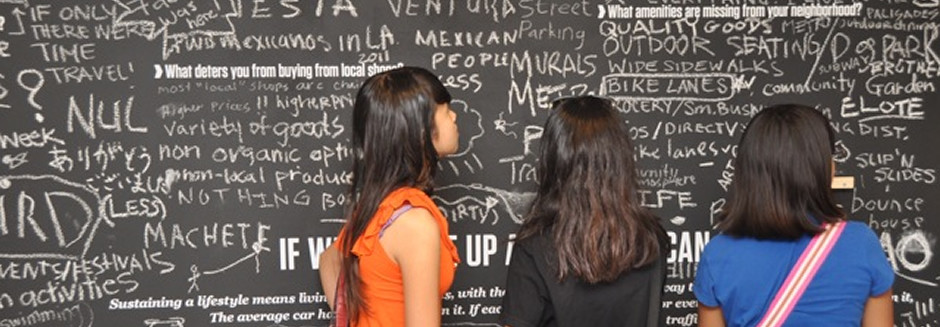Amy Morris, program officer, Strong Local Economies, speaks with Judilee about her reflections from the past year and a vision for the centrality of arts and culture in a sustainable community.
Tell us how you’re thinking about the aesthetic while also placing an emphasis on how, where, and by whom art is practiced?
I see equal importance in how objects are made. How, for example, a theater piece comes together is as important as the production itself. The act of making art is important—particularly art that requires collaboration and thoughtfulness about the community and culture it reflects and embodies. It’s important to talk about the artistic practice as having aesthetic value in equal measure to the product having aesthetic value.
What is your highest aspiration for what can be achieved through the Thriving Cultures work?
Artists experience a kind of economics that is largely misunderstood by the general public, by economic and community development specialists, and by philanthropy in general. It’s a profession with incredibly high levels of educational attainment, yet artists require second jobs in order to do the work they were trained for. Artists tend to make around $10,000 a year from their artistic practice. This only begins to describe a system in which work is being sold at record highs in the commercial market, yet the vast majority of artists are making very, very little from their art. So there’s an opportunity to bolster the ability of artists to make their way financially, to have healthy lives, to be able to support their families, and to help other people understand the value of what it is that they do. Our hope is that eventually we will begin to see fewer artists who are working second jobs or who have to distinguish between their “day job” and their career as an artist.
There’s also a significant role for us to play in demonstrating how creative place making can work in an equitable way. We don’t want creative place making to just be about breathtaking transformation from poverty to high tourist area. We want it to be something that is more sustainable and recognizes the existing assets within a community, even a poor community. It’s an opportunity for funders to take a more nuanced approach to what communities need, particularly communities that have been disenfranchised from economic gains.
You’ve spoken passionately about respecting an artist’s practice, and not meddling. Why is this so important?
When you value the artist’s voice, often the best possible investment is letting the artist find his or her own way through the creative process. This requires a fairly high appetite for failure, because work doesn’t always look great once it’s up on stage or on the wall. And that has to be OK. We impress this notion not only upon ourselves as staff, but we also try to influence our partners, and Surdna’s board. You can’t single out one piece of artwork and make a decision about whether or not the artist’s work is good—because we all have our off days. And often these moments of failure, for an artist who is constantly seeking and trying to answer a new set of questions, lead to something brilliant. If we can hold that as a hope—as an aspiration—then we have a much higher likelihood of funding innovation in our portfolio.
Is a more nuanced view of the role of arts and culture emerging among funders?
Arts and culture are being included in strategies designed to contend with profound community challenges including infrastructure, economic development, and land use. Increasingly, there’s a recognition that arts and culture reflect what people believe and how they live, and thus introduces even greater sustainability into solutions. We’re also witnessing the emergence of a more complex understanding of what artists do and the value that they create in their communities. One of our goals is to help communities and stakeholders understand that there’s a very real economic value that can be assigned to this.

